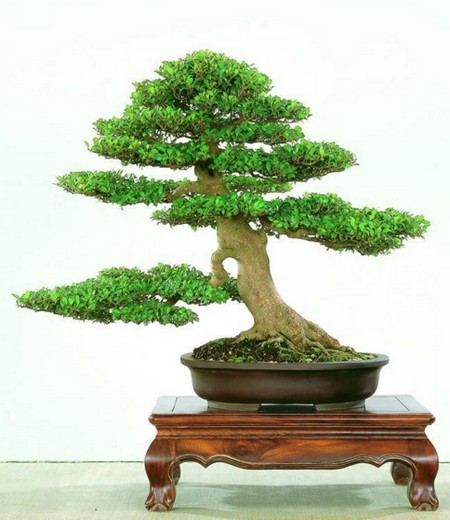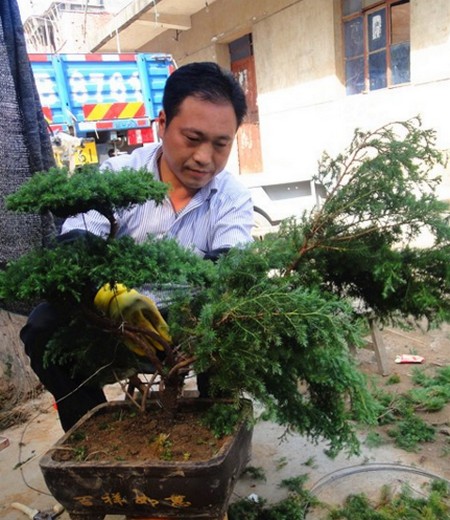Bonsai planting technique of Zanthoxylum nitidum
Zanthoxylum nitidum is a woody vine of Rutaceae and Zanthoxylum bungeanum. There are hooked prickles on both sides of stem, branch, leaf axis and leaflet midvein. The main root of Zanthoxylum nitidum is stout, with many branches, the outer skin of the root is yellow, the endothelium is sulfur yellow, soft, the taste is very bitter, and the tongue is numb. It is appropriate to choose sunny, good drainage, deep and loose and fertile loam, full reclamation, deep ploughing 30 cm, rake flat broken soil, do border, open drainage ditch.

Artificial planting
1. Land selection and preparation: it is appropriate to choose sunny, good drainage, deep and loose and fertile loam, full reclamation, deep ploughing of 30cm, rake flat broken soil, make beds, and open drainage ditches.
2. Sowing and raising seedlings: either autumn sowing or spring sowing. Autumn sowing in September when the seeds mature, sowing along with the harvest, the germination rate is high. Spring sowing takes place in late March. Sow the seeds in the seedbed, cover 2cm of fine soil, cover the grass and water. The sowing rate is 1250 / mu 1500 g / mu. The seedlings can emerge 20 days after sowing when the temperature is above 25 ℃, and the cover grass can be removed after emergence.
3. Planting: when the height of the seedling is about 20 cm, it can be transplanted. Hole planting: dig the pit according to the plant spacing of 70 cm and the row spacing of 90 cm. The tree pit length X wide X depth (cm) is 60X 60X 50, and each pit is fully fertilized. One plant was planted in each hole.
Maintenance and management
1. Intertillage weeding: within 1-2 years after planting, weeding is done 4-5 times a year, during which peanuts, soybeans and other crops can be planted. Two years later, it was ploughed and weeded 3 times a year for 4 times.
2. Topdressing: topdressing human feces and urine or urea once a month at seedling stage. After planting, turf mud, compost and barnyard manure were applied once every summer and winter. Cultivate the soil after each topdressing.
3. Pruning: after the trunk of more than two-year-old plants is basically formed, the weak branches, disease and insect branches, withered branches and budding branches from the rhizome should be pruned.
Pest control
It is common for longicorn beetles to eat stems and roots, which can manually capture adults or remove eggs, insert worms with wire to stab the larvae, or soak 80% of dichlorvos solution with medicinal cotton into the bores, seal them with mud and poison the larvae. Zanthoxylum nitidum is used as medicine. It is generally cultivated for 5 years and harvested after 6 years. Dig in winter, wash the sediment, slice it and dry it.
[function and indications]
Promoting blood circulation and removing blood stasis, relieving pain and relieving pain, dispelling wind and dredging collaterals, detoxification and detumescence. For fall injury, stomachache, toothache, rheumatism arthralgia, venomous snake bite; external treatment of burn and scald.
Time: 2019-05-25 Click:
- Prev

Planting methods and matters needing attention of mosquito mother bonsai
The mosquito mother tree has dense branches and leaves, neat tree shape, thick green leaves, not withered in winter, and beautiful small safflower in spring. In addition, it has strong resistance, good dustproof and sound insulation effect, and is a greening and ornamental tree species in urban and industrial and mining areas. It is suitable for planting on the roadside, on the front lawn and under the big trees.
- Next

Transplanting technique of Pine Bonsai
People often say an old saying: people move, trees move to death. Therefore, it is necessary to pay more attention to the transplanting of big trees, otherwise it would be a pity to die in the process of transplanting. In the case of pine trees, transplanting large pine trees is also particularly important.
Related
- Fuxing push coffee new agricultural production and marketing class: lack of small-scale processing plants
- Jujube rice field leisure farm deep ploughing Yilan for five years to create a space for organic food and play
- Nongyu Farm-A trial of organic papaya for brave women with advanced technology
- Four points for attention in the prevention and control of diseases and insect pests of edible fungi
- How to add nutrient solution to Edible Fungi
- Is there any good way to control edible fungus mites?
- Open Inoculation Technology of Edible Fungi
- Is there any clever way to use fertilizer for edible fungus in winter?
- What agents are used to kill the pathogens of edible fungi in the mushroom shed?
- Rapid drying of Edible Fungi

